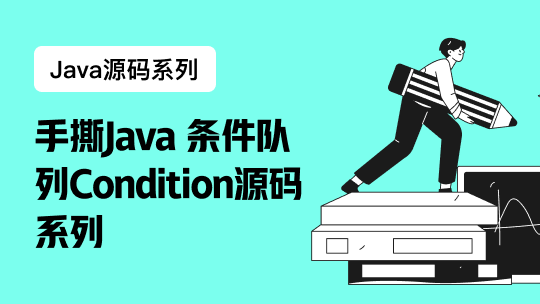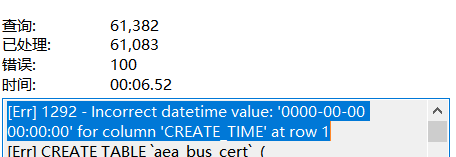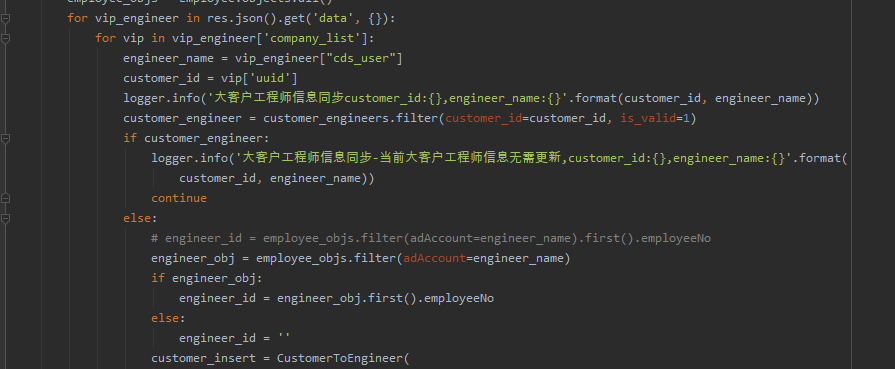引入maven依赖
引入powermock是为了解决静态方法mock的问题。
<dependency>
<groupId>org.powermock</groupId>
<artifactId>powermock-module-junit4</artifactId>
<version>2.0.2</version>
<scope>test</scope>
</dependency>
<dependency>
<groupId>org.powermock</groupId>
<artifactId>powermock-api-mockito2</artifactId>
<version>2.0.2</version>
<scope>test</scope>
</dependency>
<dependency>
<groupId>org.mockito</groupId>
<artifactId>mockito-core</artifactId>
<version>2.28.2</version>
<scope>test</scope>
</dependency>
<dependency>
<groupId>org.assertj</groupId>
<artifactId>assertj-core</artifactId>
<version>3.11.1</version>
<scope>test</scope>
</dependency>
<dependency>
<groupId>org.mockito</groupId>
<artifactId>mockito-all</artifactId>
<version>2.0.2-beta</version>
<scope>test</scope>
</dependency>
构建单元测试目录
标准的maven单元测试目录一样,在resources目录里面添加application.yml内容如下:
spring:
profiles:
active: test
---
spring:
profiles: test
dc:
security:
auditlog:
module: "System Manage" #模块名
logging:
level:
root: INFO
定义Application入口类
@ActiveProfiles("test")
@SpringBootApplication(exclude = {DataSourceAutoConfiguration.class, MultipartAutoConfiguration.class})
public class Application4Test extends SpringBootServletInitializer {
@Override
protected SpringApplicationBuilder configure(SpringApplicationBuilder application) {
return application.sources(Application4Test.class);
}
public static void main(String[] args) {
SpringApplication.run(Application4Test.class, args);
}
}
抽象测试父类
@RunWith(PowerMockRunner.class)
@PowerMockRunnerDelegate(SpringRunner.class)
@PowerMockIgnore({"javax.management.*","javax.net.*", "javax.net.ssl.*"})
@SpringBootTest(classes = Application4Test.class, webEnvironment = SpringBootTest.WebEnvironment.RANDOM_PORT)
@ActiveProfiles("test")
@ContextConfiguration(initializers = {ApplicationInitializer4Test.class})
public abstract class AbstractSpringTest {
@MockBean
protected ISecurityContextService securityContextService;
@Autowired
protected Map<String, HttpRequestInterceptor> HttpRequestInterceptorMap;
@SpyBean
protected HttpClientProperties httpClientProperties;
@Autowired
@Qualifier("restTemplate")
protected RestTemplate eurekaRestTemplate;
@Autowired
@Qualifier("simpleRestTemplate")
protected RestTemplate simpleRestTemplate;
}
启动覆盖yml配置
如果yml文件中的配置项需要覆盖,可实现ApplicationContextInitializer
public class ApplicationInitializer4Test implements ApplicationContextInitializer<ConfigurableApplicationContext> {
private static final Logger logger = LoggerFactory.getLogger(ApplicationInitializer4Test.class);
@Override
public void initialize(ConfigurableApplicationContext applicationContext) {
Resource rootCertResource = new ClassPathResource("cert/root.p12");
Resource serverCertResource = new ClassPathResource("cert/server.p12");
String rootCertPath = "";
String clientCertPath = "";
try {
File rootCertFile = rootCertResource.getFile();
File serverCertFile = serverCertResource.getFile();
rootCertPath = rootCertFile.getCanonicalPath().replaceAll("\\\\", "/");
clientCertPath = serverCertFile.getCanonicalPath().replaceAll("\\\\", "/");
logger.info("rootCertFilePath=" + rootCertPath);
logger.info("clientCertFilePath=" + clientCertPath);
} catch (IOException e) {
e.printStackTrace();
}
TestPropertySourceUtils.addInlinedPropertiesToEnvironment(
applicationContext, "server.ssl.keyStore=" + clientCertPath);
TestPropertySourceUtils.addInlinedPropertiesToEnvironment(
applicationContext, "server.ssl.trustStore=" + rootCertPath);
}
}
实际单元测试用例
@PrepareForTest({SecurityContextHolder.class, ClientContextHolder.class})
public class ApiOperationLogServiceTest extends AbstractSpringTest {
private ApiOperationLogService operationLogService;
@Before
public void setUp() throws Exception {
System.out.println("###################test start##########################");
operationLogService = new ApiOperationLogService(properties, restTemplate);
}
@After
public void tearDown() throws Exception {
System.out.println("###################test end##########################");
}
@Test
public void save() {
ResultVo resultVo = new ResultVo();
resultVo.setResultCode(0);
resultVo.setResultMessage("save log success");
ResponseEntity<ResultVo> response = new ResponseEntity<>(resultVo, HttpStatus.OK);
doReturn(response).when(restTemplate).exchange(eq(properties.getOperationLogUrl()), eq(HttpMethod.POST),
isA(HttpEntity.class), eq(ResultVo.class));
operationLogService.save(new OperationLog());
}
@Test
public void testLoadOperatorId() {
// PowerMockito打桩,模拟静态方法
PowerMockito.mockStatic(SecurityContextHolder.class);
SecurityContextImpl securityContext = new SecurityContextImpl();
securityContext.setAuthentication(
new UsernamePasswordAuthenticationToken("xiongneng", "123456"));
PowerMockito.when(SecurityContextHolder.getContext()).thenReturn(securityContext);
assertEquals(operationLogService.loadOperatorId(), "xiongneng");
}
@Test
public void testLoadClientIpWhenRemoteUserIp() {
// PowerMockito打桩,模拟静态方法
PowerMockito.mockStatic(ClientContextHolder.class);
ClientContext clientContext = new ClientContext();
clientContext.setClientIP("192.168.20.22");
clientContext.setRemoteUserIP("30.200.12.22");
PowerMockito.when(ClientContextHolder.getContext()).thenReturn(clientContext);
assertEquals(operationLogService.loadClientIp(), "30.200.12.22");
}
@Test
public void testLoadClientIpWhenNoRemoteUserIp() {
// PowerMockito打桩,模拟静态方法
PowerMockito.mockStatic(ClientContextHolder.class);
ClientContext clientContext = new ClientContext();
clientContext.setClientIP("192.168.20.22");
PowerMockito.when(ClientContextHolder.getContext()).thenReturn(clientContext);
assertEquals(operationLogService.loadClientIp(), "192.168.20.22");
}
}
调用Controller接口测试
public class RestTemplateTest extends AbstractSpringTest {
@LocalServerPort
private int port;
private URL base;
@Before
public void setUp() throws Exception {
this.base = new URL("https://localhost:" + port);
}
@Test
public void testBidirectionCertificate() {
ResponseEntity<String> response = simpleRestTemplate.getForEntity(base.toString() + "/welcome", String.class);
assertEquals(response.getBody(), "welcome");
}
}
MockBean和SpyBean区别
spy对象和mock对象的两点区别:
1、默认行为的不同
对于未指定mock的方法,spy默认会调用真实的方法,有返回值的返回真实的返回值,而mock默认不执行,有返回值的,默认返回null
2、mock的使用方式不同
mock对象的使用方式,spy对象这样使用会直接调用该方法,所以无法这样使用,比如:
Mockito.when(obj.domethod(parm1, param2)).thenReturn(result);
spy对象的使用方式,要先执行do等方法,mock对象也可以这样使用,比如:
Mockito.doReturn(info).when(obj).domethod(param1, param2);
@Spy 和 @SpyBean 的区别,@Mock 和 @MockBean的区别
- spy和mock生成的对象不受spring管理
- spy调用真实方法时,其它bean是无法注入的,要使用注入,要使用SpyBean
- SpyBean和MockBean生成的对象受spring管理,相当于自动替换对应类型bean的注入,比如@Autowired等注入
模拟void方法
对void方法的模拟有两种方式,一种是通过抛出异常,一种是通过Answer来指定void的执行过程。
抛出期望的异常:
doThrow(RuntimeException.class).when(daoMock).updateEmail(any(Customer.class), any(String.class));
指定void的执行过程:
doAnswer((Answer<Void>) invocation -> {
Object[] args = invocation.getArguments();
System.out.println("restTemplate.exchange called with arguments: " + Arrays.toString(args));
return null;
}).when(restTemplate).exchange(anyString(), eq(HttpMethod.POST),
isA(HttpEntity.class), eq(ResultVo.class));
// 执行真实方法
doAnswer(Answers.CALLS_REAL_METHODS.get()).when(mock).voidMethod(any(SomeParamClass.class));














